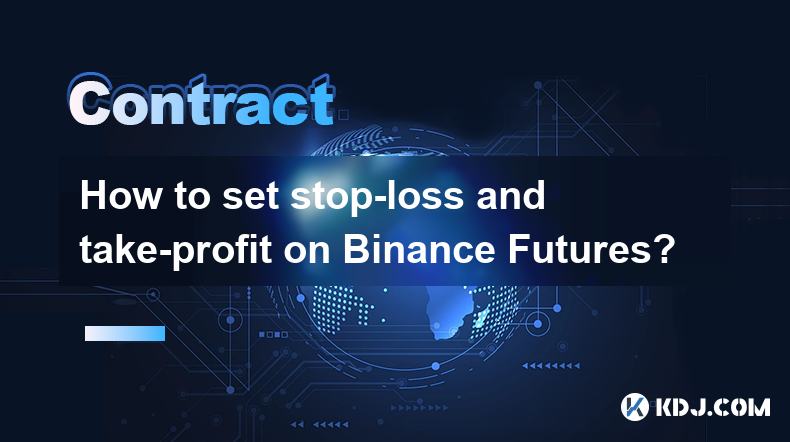-
 Bitcoin
Bitcoin $84,380.9629
-0.68% -
 Ethereum
Ethereum $1,587.8040
0.39% -
 Tether USDt
Tether USDt $0.9997
0.02% -
 XRP
XRP $2.0611
-0.10% -
 BNB
BNB $592.1695
0.41% -
 Solana
Solana $134.0171
-0.42% -
 USDC
USDC $1.0000
0.00% -
 Dogecoin
Dogecoin $0.1576
1.44% -
 TRON
TRON $0.2401
-3.06% -
 Cardano
Cardano $0.6295
2.16% -
 UNUS SED LEO
UNUS SED LEO $9.2244
1.69% -
 Chainlink
Chainlink $12.5592
0.40% -
 Avalanche
Avalanche $19.0618
0.03% -
 Toncoin
Toncoin $2.9920
1.85% -
 Stellar
Stellar $0.2398
0.17% -
 Shiba Inu
Shiba Inu $0.0...01228
4.28% -
 Hedera
Hedera $0.1653
1.46% -
 Sui
Sui $2.1201
-0.04% -
 Bitcoin Cash
Bitcoin Cash $335.2957
0.47% -
 Polkadot
Polkadot $3.6693
0.93% -
 Litecoin
Litecoin $75.9657
1.55% -
 Hyperliquid
Hyperliquid $17.0326
-0.70% -
 Dai
Dai $1.0000
0.01% -
 Bitget Token
Bitget Token $4.4071
0.71% -
 Ethena USDe
Ethena USDe $0.9992
0.02% -
 Pi
Pi $0.6423
4.69% -
 Monero
Monero $215.4419
-0.65% -
 Uniswap
Uniswap $5.1801
0.13% -
 Pepe
Pepe $0.0...07322
1.11% -
 OKB
OKB $50.2807
-0.70%
How to set stop-loss and take-profit on Binance Futures?
Binance Futures' stop-loss and take-profit orders mitigate risk in leveraged trading, automatically executing at predefined prices to limit losses and secure profits. However, understanding order types (limit, market, OCO) and potential slippage is crucial for effective risk management.
Mar 17, 2025 at 08:48 pm

Key Points:
- Understanding Binance Futures trading and its inherent risks.
- Defining stop-loss and take-profit orders and their importance.
- Step-by-step guide on setting stop-loss and take-profit orders on the Binance Futures platform.
- Exploring different order types available for risk management.
- Addressing common misconceptions and potential pitfalls.
- Examining advanced strategies involving stop-loss and take-profit orders.
How to Set Stop-Loss and Take-Profit on Binance Futures?
Binance Futures offers a leveraged trading environment with significant potential for profit, but also substantial risk. Successfully navigating this market requires a robust risk management strategy, primarily through the use of stop-loss and take-profit orders. These orders automatically execute when the price reaches a predefined level, limiting potential losses and securing profits. Let's delve into how to effectively implement these crucial tools.
First, it's vital to understand the inherent risks associated with futures trading. Leverage magnifies both profits and losses, meaning even small price movements can lead to significant gains or devastating losses. Stop-loss and take-profit orders are not foolproof, and unexpected market volatility can still trigger losses despite their implementation. Thorough market research and understanding of your risk tolerance are paramount.
Setting Stop-Loss Orders on Binance Futures:
A stop-loss order automatically sells your position when the price falls to a specified level, limiting potential losses. This helps prevent large losses during unexpected market downturns. Here's how to set one on Binance Futures:
- Navigate to your Futures trading interface: Log into your Binance account and go to the Futures trading section.
- Select your trading pair: Choose the cryptocurrency futures contract you're trading (e.g., BTCUSDT).
- Specify your order type: Choose "Limit" or "Market" order. Limit orders will execute at or better than your specified price, while market orders execute immediately at the best available price.
- Enter your stop price: This is the price at which your stop-loss order will be triggered.
- Enter your quantity: This is the amount of contract you want to sell.
- Review and confirm: Double-check all details before placing your order.
Setting Take-Profit Orders on Binance Futures:
A take-profit order automatically sells your position when the price rises to a specified level, securing your profits. This helps lock in gains and prevent profit erosion from potential price reversals. The process is similar to setting a stop-loss order:
- Navigate to your Futures trading interface: Similar to the stop-loss process, begin on the Binance Futures trading page.
- Select your trading pair: Choose the cryptocurrency futures contract you are trading.
- Specify your order type: Again, select "Limit" or "Market." A limit order guarantees execution at or better than your specified price.
- Enter your take-profit price: This is the price at which your take-profit order will be triggered.
- Enter your quantity: This represents the amount of contract you want to sell.
- Review and confirm: Carefully review your order details before confirming.
Different Order Types for Risk Management:
Binance Futures offers various order types beyond basic limit and market orders, enhancing your risk management capabilities. These include:
- Stop Market Order: This order type immediately sells your position at the market price once the stop price is reached.
- Trailing Stop Order: This dynamically adjusts your stop-loss price as the price moves in your favor, locking in profits while minimizing losses.
- OCO (One Cancels the Other) Order: This allows you to place a stop-loss and a take-profit order simultaneously. If one is executed, the other is automatically canceled.
Advanced Strategies:
Experienced traders often employ more complex strategies involving stop-loss and take-profit orders. These might include:
- Multiple stop-loss levels: Setting multiple stop-loss orders at different price points to manage risk in a layered approach.
- Dynamic stop-loss adjustments: Modifying stop-loss levels based on market conditions and volatility.
- Combining with other indicators: Integrating stop-loss and take-profit orders with technical indicators to enhance decision-making.
Common Questions:
Q: What happens if my stop-loss order doesn't execute due to slippage? A: Slippage, the difference between the expected execution price and the actual execution price, can occur during periods of high volatility. While a stop-loss aims to minimize losses, slippage can result in losses exceeding your intended limit.
Q: Can I modify or cancel a pending stop-loss or take-profit order? A: Yes, you can modify or cancel pending orders before they are triggered. Navigate to your "Open Orders" section on Binance Futures to manage your active orders.
Q: Are stop-loss and take-profit orders guaranteed to protect me from all losses? A: No, these orders are tools to mitigate risk, not eliminate it entirely. Unexpected market events or extreme volatility can still lead to losses even with these orders in place. Gaps in the market can also cause orders to not fill at the expected price.
Q: How do I choose appropriate stop-loss and take-profit levels? A: This depends on your risk tolerance, trading strategy, and market conditions. Many traders use technical analysis and risk management techniques to determine appropriate levels. Consider factors like support and resistance levels, volatility, and your overall trading plan.
Disclaimer:info@kdj.com
The information provided is not trading advice. kdj.com does not assume any responsibility for any investments made based on the information provided in this article. Cryptocurrencies are highly volatile and it is highly recommended that you invest with caution after thorough research!
If you believe that the content used on this website infringes your copyright, please contact us immediately (info@kdj.com) and we will delete it promptly.
- BNB Buying Demand Rises as Market Sentiment Turns Positive
- 2025-04-19 08:20:16
- FUR PFP Campaign
- 2025-04-19 08:20:16
- The legal fight against crypto exchanges flares up again
- 2025-04-19 08:15:13
- Presidential Crypto Advisory Committee Head Bo Hines Highlights Ways the United States Could Improve Its Bitcoin (BTC) Reserves
- 2025-04-19 08:15:13
- Prominent Bitcoin Pundit Davinci Jeremic Has Shared a Bullish Outlook for XRP Despite His Long-Standing Reservations About the Ripple-Linked Coin
- 2025-04-19 08:10:15
- Broncos Give 2025 Reaches Nearly 1200 Donors
- 2025-04-19 08:10:15
Related knowledge

How does Tail Protection reduce the loss of liquidation?
Apr 11,2025 at 01:50am
Introduction to Tail Protection in CryptocurrencyTail Protection is a mechanism designed to mitigate the risks associated with liquidation in cryptocurrency trading. Liquidation occurs when a trader's position is forcibly closed by the exchange due to insufficient margin to cover potential losses. This often happens in leveraged trading, where traders b...

What are the consequences of an imbalance in the long-short ratio?
Apr 13,2025 at 02:50pm
The long-short ratio is a critical metric in the cryptocurrency trading world, reflecting the balance between bullish and bearish sentiments among traders. An imbalance in this ratio can have significant consequences on the market dynamics, affecting everything from price volatility to trading strategies. Understanding these consequences is essential fo...

How to judge the market trend by the position volume?
Apr 11,2025 at 02:29pm
Understanding how to judge the market trend by position volume is crucial for any cryptocurrency trader. Position volume, which refers to the total number of open positions in a particular cryptocurrency, can provide valuable insights into market sentiment and potential price movements. By analyzing this data, traders can make more informed decisions ab...

Why does a perpetual contract have no expiration date?
Apr 09,2025 at 08:43pm
Perpetual contracts, also known as perpetual futures or perpetual swaps, are a type of derivative product that has gained significant popularity in the cryptocurrency market. Unlike traditional futures contracts, which have a fixed expiration date, perpetual contracts do not expire. This unique feature raises the question: why does a perpetual contract ...

Why is the full-position mode riskier than the position-by-position mode?
Apr 13,2025 at 03:42pm
Why is the Full-Position Mode Riskier Than the Position-by-Position Mode? In the world of cryptocurrency trading, the choice between full-position mode and position-by-position mode can significantly impact the risk profile of a trader's portfolio. Understanding the differences between these two modes is crucial for making informed trading decisions. Th...

How is the liquidation price calculated?
Apr 12,2025 at 01:35am
Introduction to Liquidation PriceLiquidation price is a critical concept in the world of cryptocurrency trading, particularly when dealing with leveraged positions. Understanding how this price is calculated is essential for traders to manage their risk effectively. The liquidation price is the point at which a trader's position is forcibly closed by th...

How does Tail Protection reduce the loss of liquidation?
Apr 11,2025 at 01:50am
Introduction to Tail Protection in CryptocurrencyTail Protection is a mechanism designed to mitigate the risks associated with liquidation in cryptocurrency trading. Liquidation occurs when a trader's position is forcibly closed by the exchange due to insufficient margin to cover potential losses. This often happens in leveraged trading, where traders b...

What are the consequences of an imbalance in the long-short ratio?
Apr 13,2025 at 02:50pm
The long-short ratio is a critical metric in the cryptocurrency trading world, reflecting the balance between bullish and bearish sentiments among traders. An imbalance in this ratio can have significant consequences on the market dynamics, affecting everything from price volatility to trading strategies. Understanding these consequences is essential fo...

How to judge the market trend by the position volume?
Apr 11,2025 at 02:29pm
Understanding how to judge the market trend by position volume is crucial for any cryptocurrency trader. Position volume, which refers to the total number of open positions in a particular cryptocurrency, can provide valuable insights into market sentiment and potential price movements. By analyzing this data, traders can make more informed decisions ab...

Why does a perpetual contract have no expiration date?
Apr 09,2025 at 08:43pm
Perpetual contracts, also known as perpetual futures or perpetual swaps, are a type of derivative product that has gained significant popularity in the cryptocurrency market. Unlike traditional futures contracts, which have a fixed expiration date, perpetual contracts do not expire. This unique feature raises the question: why does a perpetual contract ...

Why is the full-position mode riskier than the position-by-position mode?
Apr 13,2025 at 03:42pm
Why is the Full-Position Mode Riskier Than the Position-by-Position Mode? In the world of cryptocurrency trading, the choice between full-position mode and position-by-position mode can significantly impact the risk profile of a trader's portfolio. Understanding the differences between these two modes is crucial for making informed trading decisions. Th...

How is the liquidation price calculated?
Apr 12,2025 at 01:35am
Introduction to Liquidation PriceLiquidation price is a critical concept in the world of cryptocurrency trading, particularly when dealing with leveraged positions. Understanding how this price is calculated is essential for traders to manage their risk effectively. The liquidation price is the point at which a trader's position is forcibly closed by th...
See all articles
























































































